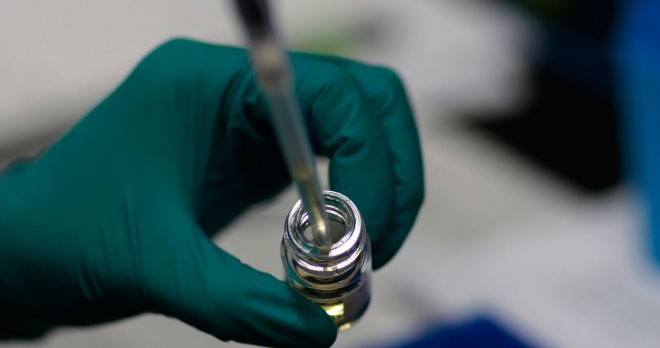
In a remarkable new advance against the virus that causes AIDS, scientists have announced the creation of a novel drug candidate that may be able to block HIV from infiltrating healthy cells. While it will take years before this approach can be tested in humans, the concept provides new insight on how to protect people against HIV infection, and could eventually inform the development of a vaccine, researchers report in the journal Nature.
The study shows that the new drug candidate blocks every strain of HIV-1, HIV-2 and SIV (simian immunodeficiency virus) that has been isolated from humans or rhesus macaques, including the hardest-to-stop variants. It also protects against much-higher doses of virus than occur in most human transmission and does so for at least eight months after injection.
“Our compound is the broadest and most potent entry inhibitor described so far,” said Dr. Michael Farzan, a professor at Scripps Research Institute and the project’s lead investigator. “Unlike antibodies, which fail to neutralize a large fraction of HIV-1 strains, our protein has been effective against all strains tested, raising the possibility it could offer an effective HIV vaccine alternative.”
The protein works by mimicking two receptors on the surface of the immune cells that HIV infects. When the virus encounters the protein, it springs into action as if infecting a cell. The changes the virus undergoes render it incapable of future attempts at infection, said Dr. Farzan.
For people, the protein could one day offer lasting protection against HIV infection by means of gene therapy, the researchers said. A designated gene would be carried into muscle cells by an innocuous virus. Then the gene, called eCD4-Ig, would be deposited into the muscle cells, where it would churn out the artificial protein into the bloodstream. If the protein encounters any HIV, it would bind to it, rendering the virus harmless.
Effects were more potent than any available broadly neutralizing antibodies
The scientists took a novel approach to hitting HIV’s weak spots: the receptors it must attach to infect the cells. These are called CD4 and CCR5, (along with CXCR4, a receptor close to CCR5 that can serve in its place). HIV must attach to both locations to enter into the cell, Dr. Farzan said. Once it attaches, the virus changes shape to drive itself into the cell.
“When antibodies try to mimic the receptor, they touch a lot of other parts of the viral envelope that HIV can change with ease,” explains first author Dr. Matthew Gardner, a researcher at Scripps. “We’ve developed a direct mimic of the receptors without providing many avenues that the virus can use to escape, so we catch every virus thus far.”
Data from the study showed that the drug candidate binds to the envelope of HIV-1 more potently than the best available broadly neutralizing antibodies against the virus. The encouraging results suggest that the approach could provide long-term protection against HIV infection, like a vaccine; in four monkeys treated with gene therapy to receive eCD4-Ig, none became infected with HIV even after several attempts to infect them with the virus.
The protection also seems to be long-lasting. So far, the treated monkeys have survived more than a year despite being exposed to HIV, while untreated control monkeys have died after getting infected.
The strategy, while promising, is still many steps away from being tested in people. While Dr. Farzan’s team used a cold virus to introduce the eCD4-Ig complex directly into the muscle of the animals, it’s not clear whether this will be best strategy for people. Previous gene therapy methods have led to safety issues, and concerns have been raised about controlling where and how much of the introduced material gets deposited in the body. It may also be possible to give the peptide as an injection every few years to maintain its anti-HIV effect.
Dr. Farzan is hopeful that, if proven safe, the strategy could help both infected patients keep levels of HIV down, as well as protect uninfected, high-risk individuals from getting infected.
According to the World Health Organization, an estimated 35 million people worldwide have HIV/AIDS, including 3.2 million children under age 15. As the No. 1 cause of death by infection worldwide, HIV/AIDS killed 1.5 million people in 2013 — a drop of 35 percent since 2005, when 2.4 million died of the disease.
